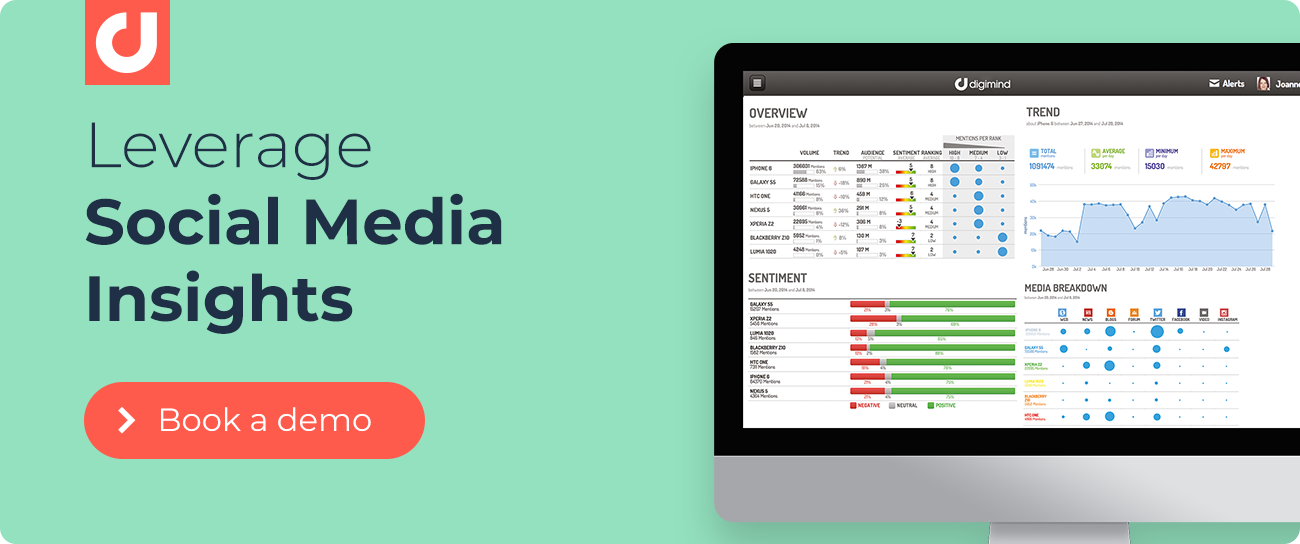9 Ways To Get More Feedback from Internal Customers
Feedback is a crucial component of the intelligence cycle - it can help practitioners to highlight specific areas for improvement, identify gaps in intelligence ou
tput, as well as providing insight into how the intelligence function is perceived by internal stakeholders in the organization.
Unfortunately, seeking feedback from internal customers is perhaps one of the most overlooked steps in the intelligence process. This is self-defeating because feedback is the lifeblood that is needed to make your intelligence department function better.
We’ve listed nine ways of getting feedback below. Let us know if any of these methods work for you or if you have any other tried and tested techniques you'd like to share with us!
1. Send Out Web-based Surveys Via Email
The best feedback is both timely and specific, allowing you ample opportunity to address the issues that are raised. If you wish to isolate a particular area for improvement, frame your questions in such a way as to elicit a very specific response. For example, you might want to determine if the quality and frequency of information is satisfactory.
Ideally, a good mix of quantitative and open-ended questions will provide you with a broad picture of how your intelligence function is perceived by others and what value they attach to it.
2. Include a Feedback Form in Every Newsletter
One of the most memorable soundbites from the SCIP 2012 European summit was this simple truism about feedback: “Asking for feedback is paramount, do not expect it to be offered.” We should never presume that our colleagues will take the time to construct meaningful feedback unless we encourage them to do so.
By reminding your customers that their feedback allows you to better meet their needs, you are giving them a valuable stake in the performance of your department. The other truism about feedback is “If at once you don’t succeed, try and try again” so be persistent in getting as much feedback as you can.
3. Secure Management Buy-in
Enlist the support of senior management to help you push your internal customers for more feedback and engagement. If possible your senior boss should send out a company-wide email explaining the importance of feedback and asking for everyone’s involvement. Having buy-in from senior management helps to create a culture where feedback is seen as just a normal part of the business process to drive improvement. Having the support of senior management will also certainly increase the level of feedback you can expect to attain.
4. Call the Heads of Other Departments Directly
As well as being specific about the kind of feedback you are looking for, you need to identify the people whose feedback matters most. Start reaching out to the heads of other departments with a view to building an open, constructive relationship. Target each department individually in order to ascertain how the intelligence function meets the particular needs of that unit.
Perhaps you are quite efficient in providing timely, actionable intelligence to the Sales team but you might be less proactive in dealing with the intelligence needs of the R&D or Finance department. Start off by contacting one or two customers per week to seek feedback, address any concerns and work with them to identify any new intelligence needs.
5. Organize Regular Focus Groups
Compile a list of customers (7-10 approximately) to participate in a focus group where you can ask targeted questions and facilitate an open dialogue about the perceived strengths and weaknesses of the intelligence department and its activities. You should commit to hosting these focus groups every quarter in order to track your performance on an ongoing basis.
6. Gather Customer Testimonials
An important part of the feedback process is to understand when your intelligence function ‘gets it right’ in order to replicate that in the future. Ask your customers to provide you with a testimonial to demonstrate the value of intelligence in the organization.
For testimonials to be effective they should avoid being mere platitudes and should instead recount a business situation in which some actionable information or insight brought real, measurable value to the company.
7. Informal, Ad-hoc Feedback
The value of informal feedback can be very powerful as there are no parameters. Make informal inquiries in the company canteen or at the water cooler to gauge feedback on the latest intelligence report or ask your colleagues about how you can cooperate with them more to help them achieve their goals. Find out what sort of information they value the most and what type of information is extraneous to their needs.
8. Offer Incentives
While some people caution against offering incentives such as raffle prizes in exchange for feedback, there is no doubt that it increases the response rate. This is especially useful in a business environment where people are reluctant to come forward and give feedback.
As a last ditch attempt to get feedback from your customers, it’s worthwhile offering a relatively inexpensive but attractive raffle prize, such as dinner for two at a trendy restaurant or one of the latest tech gadgets, in exchange for filling out a survey.
9. Anonymous Feedback
Consider establishing an online portal where internal customers can send feedback anonymously. Or use a tool such as SurveyMonkey to create an anonymous survey.
Good Luck! And remember that constructive feedback will not only help to guide your future intelligence activities but it can also serve as a powerful motivator for continuous improvement.

Written by Jerome Maisch
Marketing Manager @digimindci. Passionate about big data & social marketing. Photography, music and hiking lover
